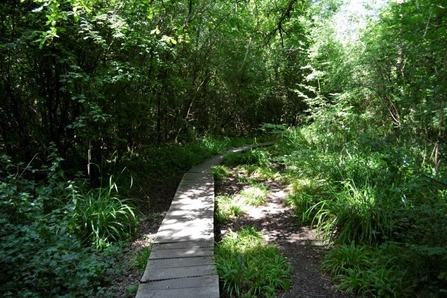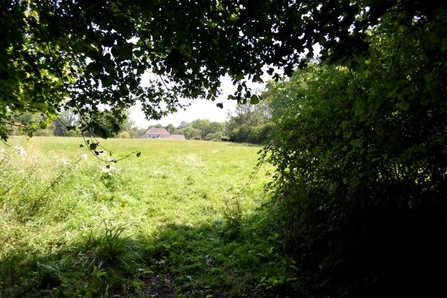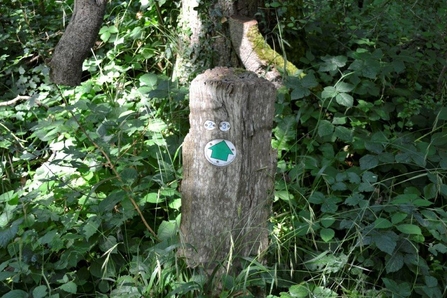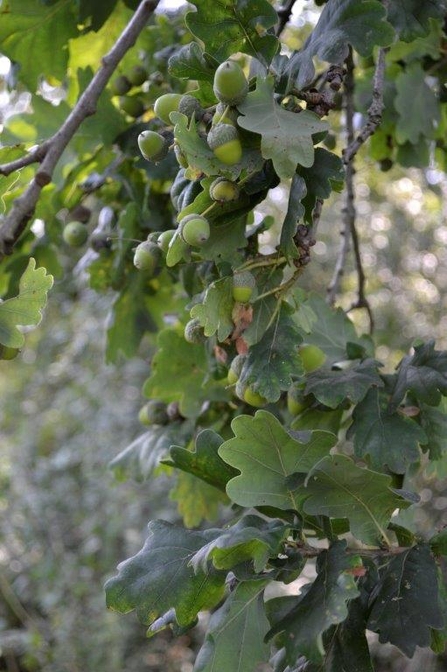| How long does it take to walk? | I chose the green route at Lower Woods, which is about 2.4kms. |
| How much time does it take? | Give yourself about 1.5 hours. |
| Difficulty rating | Moderate. |
| Terrain | Uneven paths, some slopes, mud during wet times of the year, grass. Not suitable for wheelchairs. |
| What to spot | Ancient oak trees, meadow saffron, fungi including russulas, beefsteak, death cap, honey fungus and many others. Otter spraint, kingfishers, grey wagtail, nuthatch, tree creeper, spotted fly catchers, tracks of muntjac and roe deer, old grassy roads known as trenches, grazing cattle, small river (shallow in summer), autumn berries. |
| Perfect for | Families with young children, or friends having a catch up: travel to Wickwar to visit The Wickwar Brewing Company or The Buthay Inn or Hawkesbury Upton for the Beaufort Arms or The Fox Inn. |
The Lower Woods Green Route
Yet there’s even more to behold for those prepared to venture away from the beaten track, including sections of countryside lying far from the hustle and bustle of daily life that have lain unchanged for hundreds if not thousands of years.
A mouse took a stroll through the deep, dark wood … if this sentence sounds familiar, then a walk on the wild side through Lower Woods could be just the ticket.
Stretching over 700 acres – from Inglestone Common near Hawkesbury Upton at its most northerly point to Vinney Lane in Horton to the south - this collection of several different ancient woodlands is one of the largest sites of its kind within the South West and a perfect place to go in search of the Gruffalo.
For lovers of history it’s a journey into Medieval times, with the landscape remaining unchanged for more than 500 years. This step back in time reveals small coppices of hazel surrounded by ancient woodbanks and joined up by old grassy roads known as ‘trenches’ and areas of grazed common lands.
Even if children’s literature or a glimpse into the past fail to inspire, Lower Woods is the perfect spot to shake off the 21st Century and its challenges and become immersed within the other-worldly atmosphere created by cathedral-like tree canopies, the sound of the breeze occasionally punctured by birdsong and the very strong possibility of walking for long periods without coming across another soul.

Well kept secret
One of the reasons for the overriding feeling of seclusion to be found within this special site is the fact that it’s not that well known. There are no brown signs on its approach roads guiding visitors towards it, and those who happen by chance to turn off the A46 towards Hawkesbury Upton and continue along this road could easily miss it.
Even sat navs aren’t fool proof when seeking out Lower Woods, with the narrow road leading to the nature reserve being found at a point lying between the postcodes of GL9 1BX and GL9 1BY. Instead it’s better to look for a sign for Inglestone Farm and turn down the stone track opposite to reach the nature reserve.
Once there, park up in one of the 30 free spaces for cars and take time to seek out Gloucestershire Wildlife Trust’s interpretation board showing an overall map of the nature reserve – situated opposite the wood yard to the left of the car park - and there’s a large bin for bags of dog poop if required.
Those feeling apprehensive about entering a 700-acre wood may find it reassuring to use a mobile phone camera to capture an image of the overall site before setting off, especially as the signal around these parts can be sketchy. Be aware there are no public toilets at this site – the loos behind a locked gate are for staff and volunteers.

Choice of four routes
Gloucestershire Wildlife Trust has created four way-marked trails from the Inglestone Common end of Lower Woods. The shortest route is a short circular stroll, marked by blue arrows, that takes visitors as far as the picturesque East Stanley Wood before returning them to the car park.
Red arrows indicate the Stanley Walk, which passes a large meadow and stretches as far as Little Stanley Wood.
If rivers appeal, the Little Avon Circuit marked by green arrows provides a reasonable-length walk, although those looking to build up their step count may consider starting off on it and then veering off at the Little Avon River Bridge to join the Lilley Loop, marked in yellow, which crosses the Lower Wetmoor Wood and follows the Ragnal Trench to reach Littley Wood, before heading back along the Littley New Trench and crossing another bridge to re-join the original route.
The weather was hot and sticky on the day of my visit in August 2020 and I plumped for the Little Avon Circuit, the first part of which led to a narrow, mesh-topped board walk installed to make it easier to negotiate a footpath that obviously gets somewhat muddy when the weather is wet, and before long I was passing Stanley Meadow and saying hello to the cows grazing there.
During the walk I frequently found my eyes being drawn to the mix of trees, including oak, birch, aspen and wild service and noted how some had toppled over time, their bent limbs stretching across dips to provide easy crossings for animals such as dormice, for which Lower Woods is an important habitat. I was also fascinated by the gnarled stumps of trees created by the time-honoured practice of coppicing.
Elsewhere there were signs of tree felling, some of which was carried out for safety reasons following outbreaks of the deadly Ash Dieback, a fungal disease also known as Chalara, which can leave limbs in a brittle state and susceptible to breaking.
Gloucestershire Wildlife Trust often leaves trunks to rot naturally, creating habitats for a variety of creatures, not to mention seats for tiring walkers.

Watery space
After a quick rest, I set off towards the Little Avon, eventually reaching a bridge funded by the Forestry Commission and built by the Lower Woods Thursday Volunteers to mark the 50th anniversary of the Gloucestershire Wildlife Trust in 2011. As well as providing a sturdy route across the waterway, it’s the perfect spot for a quick game of Pooh sticks to boot!
Most of the green route is on the flat, although towards the end of the route there’s a gradual incline that takes a little more effort to climb.
Nevertheless this was a small price to pay for a precious opportunity to spend an hour or so away from the stresses and strains of modern life, bathing in the dappled light and cooler temperatures on a day when the mercury was exceeding 30°C.
Given it was summer holiday time, I wasn’t surprised to encounter a few families making the most of the opportunity to explore a space that time has seemingly forgot, but generally it felt as though I had the entire expanse of woodland to myself.

Visit throughout the seasons
Lower Woods is open 365 days a year and beautiful throughout the seasons, from the carpets of bluebells and vibrant unfurling leaves of spring to the generous canopies of summer, with the chance of spotting a variety of wild flowers and butterflies, including white admiral and silver-washed fritillary. Autumn brings glorious foliage colours while winter possesses a stark beauty of its own.
Several of the paths running through Lower Woods are rough underfoot, although there are flatter stretches closer to the car parks that could be used by all-terrain wheelchairs and pushchairs at drier times of the year. Dogs should be kept on leads between March 1 and July 31, as per the Countryside and Rights of Way Act 2000.
